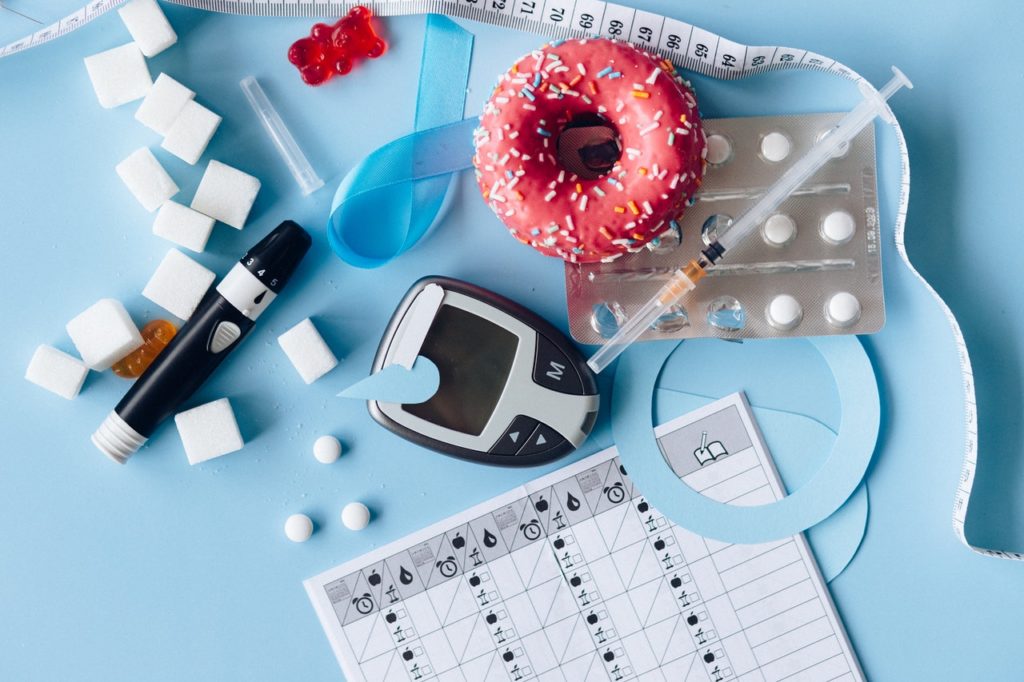
I learned this today. Insulin is a peptide hormone that regulates the metabolism of carbohydrates, fats, and proteins in the body.
How is insulin made? Insulin is made in the pancreas. The pancreas is an organ that is found just behind the stomach. It is responsible for making enzymes that are known as pancreatic juices. These break down sugars, fats, and starches. The three enzymes are lipase, protease, and amylase. Lipase works with bile produced by the liver to break down fats. Protease breaks down the proteins and amylase breaks down starches.
The pancreas also produces different kinds of hormones. The main ones are insulin, glucagon, and gastrin. Insulin is released when the glucose levels in your blood rise and it tells your body to use the glucose. Glucagon is released when the glucose levels in your blood are too low and it tells your liver to release stored sugar. Gastrin is released when food enters the stomach and it tells your stomach to make gastric acid.
Insulin is produced by beta cells in the pancreas. Beta cells are sensitive to glucose and when the glucose levels in the blood rise, the beta cells automatically release the insulin they have stored, which lasts for about ten minutes. Then they start to produce and release more insulin, which takes between two and three hours. Glucose is a simple sugar that is produced by plants when they photosynthesize. They combine water and carbon dioxide using energy from sunlight.
What does insulin look like? It is a large hormone. It has 51 amino acids. It consists of two peptide chains that are called the A-chain and the B-chain. A peptide chain is a chain of amino acids. The A-chain has 21 and the B-chain has 30. The chains are held together by disulfide bridges.
What does insulin do? When the glucose levels in the blood rise, the beta cells are triggered to release insulin into the blood. Insulin travels around in the blood and attaches to insulin receptor proteins on cells. When it does this, it causes a protein called GLUT 4 (glucose transporter type 4) to become embedded in the cell wall. GLUT 4 is kept in a balloon-like structure inside the cell until it is triggered by the insulin. This allows glucose to travel into the cell where the cell converts it to energy. The insulin is then released back into the blood and it travels to the liver and kidney to be removed from the body.
The insulin can only put so much glucose into the cells. If there is extra glucose in the blood, the insulin converts it to glycogen. Glucose is a simple sugar. Glycogen is a way of storing glucose. It consists of glucose chains centered on a glycogenin protein. Once the glucose has been converted, it is taken out of the blood by the liver and stored. Up to 6% of an average liver is made of glycogen. The glycogen is also stored in skeletal muscle. A human weighing 70 kg will have an average of 400 g of glucose in their muscles at any one time.
Once the cells, the liver, and the muscles are full, the insulin starts to store glucose in fatty cells. It does this by the same process that it helps glucose into cells. It attaches to insulin receptors on the fatty cells and activates the GLUT 4 protein.
Once the level of glucose in the blood has dropped to normal levels, the beta cells stop activating and the production of insulin ends. The extra insulin is stored in the beta cells ready for the next time they are needed.
In some people, the beta cells are unable to produce insulin, which leads to diabetes. In type 1 diabetes, the beta cells have been harmed by the body’s immune system and are unable to produce insulin. In type 2 diabetes, the beta cells basically burn out. They have been producing excessive amounts of insulin for so long, that they lose the ability. In both of these cases, timed injections of insulin are necessary to keep the body ticking over.
What happens if someone doesn’t get enough insulin? The body uses insulin to get glucose in to the cells in order to make energy. If there is no glucose, this process cannot happen and the cells lack energy. Blood glucose levels continue to rise and the body enters hyperglycemia. The liver reacts to this and begins to turn body fat into energy. This process produces acid called ketones that build up in the blood, making it acidic. If untreated, this can be fatal. It is called diabetic ketoacidosis.
So, insulin is a hormone produced in the pancreas that allows cells to take in glucose as energy. And this is what I learned today.
Photo by Nataliya Vaitkevich: https://www.pexels.com/photo/blood-sugar-meter-and-medication-on-the-blue-background-6942015/
Sources:
https://www.healthline.com/health/type-2-diabetes/insulin#understanding-diabetes
https://en.wikipedia.org/wiki/Insulin
https://en.wikipedia.org/wiki/Glucose
https://en.wikipedia.org/wiki/Beta_cell
https://en.wikipedia.org/wiki/Peptide_hormone
http://www.vivo.colostate.edu/hbooks/pathphys/endocrine/pancreas/insulin.html
https://www.webmd.com/a-to-z-guides/what-are-peptides
https://molmed.biomedcentral.com/articles/10.2119/2005-00029.Saltiel
https://www.mayoclinic.org/diseases-conditions/diabetes/in-depth/diabetes-treatment/art-20044084
https://www.drugs.com/medical-answers/glucagon-glycogen-thing-3543887/
